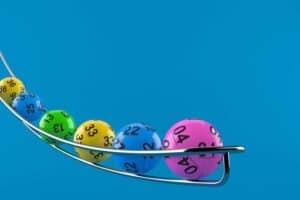The Medical Research Council is in favour of 'early implementation of a ban or restriction' when it comes to the sale of booze.

The public was supposed to be informed about the strain that alcohol-related trauma admissions were putting on the national health system before the sale of alcohol was banned for a second time.
This is according to the SA Medical Research Council (SAMRC), which has released the report that it says could be one of the reasons government put the brakes on the sale of liquor during advanced Level 3 lockdown a week ago.
It predicts that the ban could last for at least eight weeks. It presented its report to the government in early July.
“It should be noted that there are multiple pressures on the government to relax current restrictions on alcohol and … it is clear that these should not be entertained.
“It is imperative to maintain absolute transparency and inform the public of [the] rationale behind its decision to reimpose a ban or tighter restrictions,” the report says.
The report makes it clear that the SAMRC is in favour of “early implementation of a ban or restriction” when it comes to the sale of booze.
It says during levels 4 and 5 of the lockdown, which included a ban on the sale of liquor from both on-site and off-site consumption outlets, there was a 60% to 70% reduction in hospital visits and admissions related to trauma.
Since June 1, when restrictions for many industries were eased, the council says there has been an “a noticeable surge in trauma-related hospital visits”.
“This has been anecdotally attributed to easing of restrictions related to the sale and distribution of alcohol,” it says.
Estimated benefits
It estimates that the ban could achieve a reduction of approximately 3,400 alcohol-related trauma presentations across public secondary and tertiary hospitals by the end of the first week and about 6,800 by the third week.
“This is likely to have a substantial impact on reducing the burden on staff in trauma units, [and] the demand for inpatient beds, ICU facilities and ventilation capacity,” SAMRC says.
Since the initial ban was lifted, there has been a 2% increase in stab-related admissions to ICU for an average of five days.
Alternatives to a ban
The council says that as an alternative to a complete ban on alcohol sales, the government could have implemented more stringent “restrictive alcohol control interventions to reduce the availability of alcohol”. See below:
It says that though these are the recommended alternatives, they would be challenging to implement and will have a lesser impact even if used in combination.
Strategic sensibilities for government
“However, from a strategic point of view, it might be useful to consider taking such an approach to prevent push-back from the public and the liquor industry and associated businesses,” it says.
“It might also make it easier to defend legal challenges should they arise at a later stage if it is decided to still go ahead with a ban on liquor sales, as government will be able to demonstrate that it implemented less intrusive options first which didn’t have the desired impact.”
Charles Parry, director of the alcohol, tobacco and other drug research unit at the SAMRC, says there has been a significant improvement in trauma units since the ban was implemented last week.
“So far, from preliminary data I have seen from three hospitals that were presented in the media, it looks like trauma presentations have dropped between 23% and 83% following the imposition of a ban on liquor sales and the curfew comparing equivalent times before and after July 13,” he says.
Is the data accurate?
Parry adds that the council is continuing with its research to ensure that the data presented is accurate, as it may have underestimated the trauma presentations averted by a temporary ban on liquor sales.
“The assumptions are explicit and used the best data available – and were an honest attempt to address the question asked,” he says.
“The big question is: will the model be proven accurate in terms of its predictions?”
For the underlying costing estimates and bed days, he says the model used data from the ‘Mosaic’ (Modelling Covid-19 Strategies In South Africa) Collective, established by the University of Cape Town and SAMRC to provide rapid policy guidance and public engagement for South Africa’s Covid-19 response.
“We are working on collecting data to determine whether the model has made an accurate prediction,” says Parry.
While Parry cannot confirm whether or not SAMRC’s model could have influenced the government’s decision to make a U-turn on liquor sales, he believes a surge in gender-based violence could also have affected the decision.
“It was one factor and that is what the minister of health said, but I am sure there must have been other reasons … possibly the alcohol [and] GBV issues were [both] important.”
This article first appeared on Moneyweb and was republished with permission.
For more news your way, download The Citizen’s app for iOS and Android.







